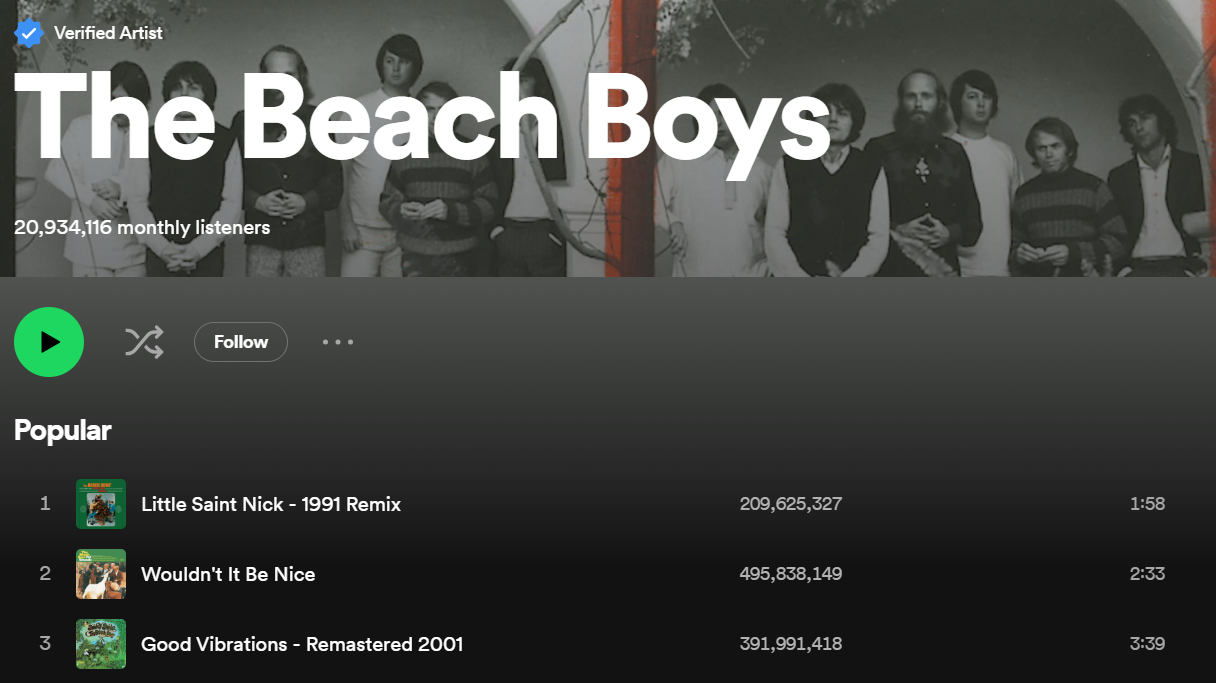
The difference in popularity, and by extension commercial value, of music in the form of albums and singles can be a hard thing to measure. Both individual songs and the albums they reside on are going to be widely consumed by audiences, regardless of if they enjoy the complete album or just a few songs on it. Alternative ways to judge this, however, have been brought on by the modern music industry, especially that influenced by the rise of the internet and digital media. From the perspective of music as a means of profit, singles are superior to albums. This can be seen by examples of music piracy, digital storefronts, and playlist culture.
A universal aspect of life is that most people desire to acquire what is most popular, socially acceptable, etc. By extension, this leads people who are the most desperate for something to go about acquiring it illegally. This relates to music consumption through the existence of piracy. What is most popular is what is most desired, and by extension, is pirated the most. Napster, a historic computer file-sharing application, is the largest example of this.
Napster allowed users to share digital music files with other users without any money being sent to the service or the royalty holders of the music. While undoubtedly illegal, Napster nonetheless grew both increasingly popular and notorious. Michael Pelusi writes in the Salem Press Encyclopedia that:
"Napster supporters contended that the service provided a much larger variety of music than most mainstream channels on the radio… and in fact enabled users to sample unknown music that they would then seek out by purchasing an artist’s CD. Many listeners had also grown tired of paying high prices for CDs. For these people, Napster seemed an ideal solution" (Pelusi).
In essence, Napster allowed its users to conveniently consume music on an individual, song-by-song basis, something unprecedented in the industry at the time. This shows that people were seeking a way to consume songs individually, regardless of whether it was legal or not. Brian Nestor, in his declaratory article Albums are Dead – Sell Singles describes this phenomenon saying, “Online piracy gave consumers a taste for acquiring music by individual song without having to buy those songs as part of an entire album… Consumers rapidly became infatuated with the notion of buying songs… because it was inexpensive and convenient (Nestor 225). Something being pirated shows that it is desired by any means necessary, and as shown by the mass piracy of individual songs through Napster, a convenient way to consume singles was greatly desired.
The interest in singles as highlighted by Napster would lead to dawn of the digital music storefront. Through services such as iTunes, the ability to purchase songs individually was put front and center. In fact, as iTunes grew more and more popular throughout the 2000s, the sales of albums decreased at an almost inversely proportional rate. With the increase in availability of singles in the music market, an equal decrease in albums represents a greater desire for singles than albums in the music market. As a logical result, singles are more commercially viable than albums in the modern music market.


Even as music consumption has evolved since the 2000s, the dominance of singles has reigned true with the musical takeover of streaming services and playlist culture. Even more so than digital storefronts like iTunes, online music streaming services such as Spotify and Apple Music place singles at the forefront of music consumption. Artists’ top songs are constantly put on full display both on their individual pages and within created and curated playlists. In contrast, albums are available to be listened to, but are inconvenient to find and sort through. Artists are now paid on a stream-by-stream basis, with albums only being a suggestion on how to acquire those streams.

As evident by the growing power in singles over time and the inversely decreasing influence of albums, from a commercial perspective of music, singles are superior to albums.